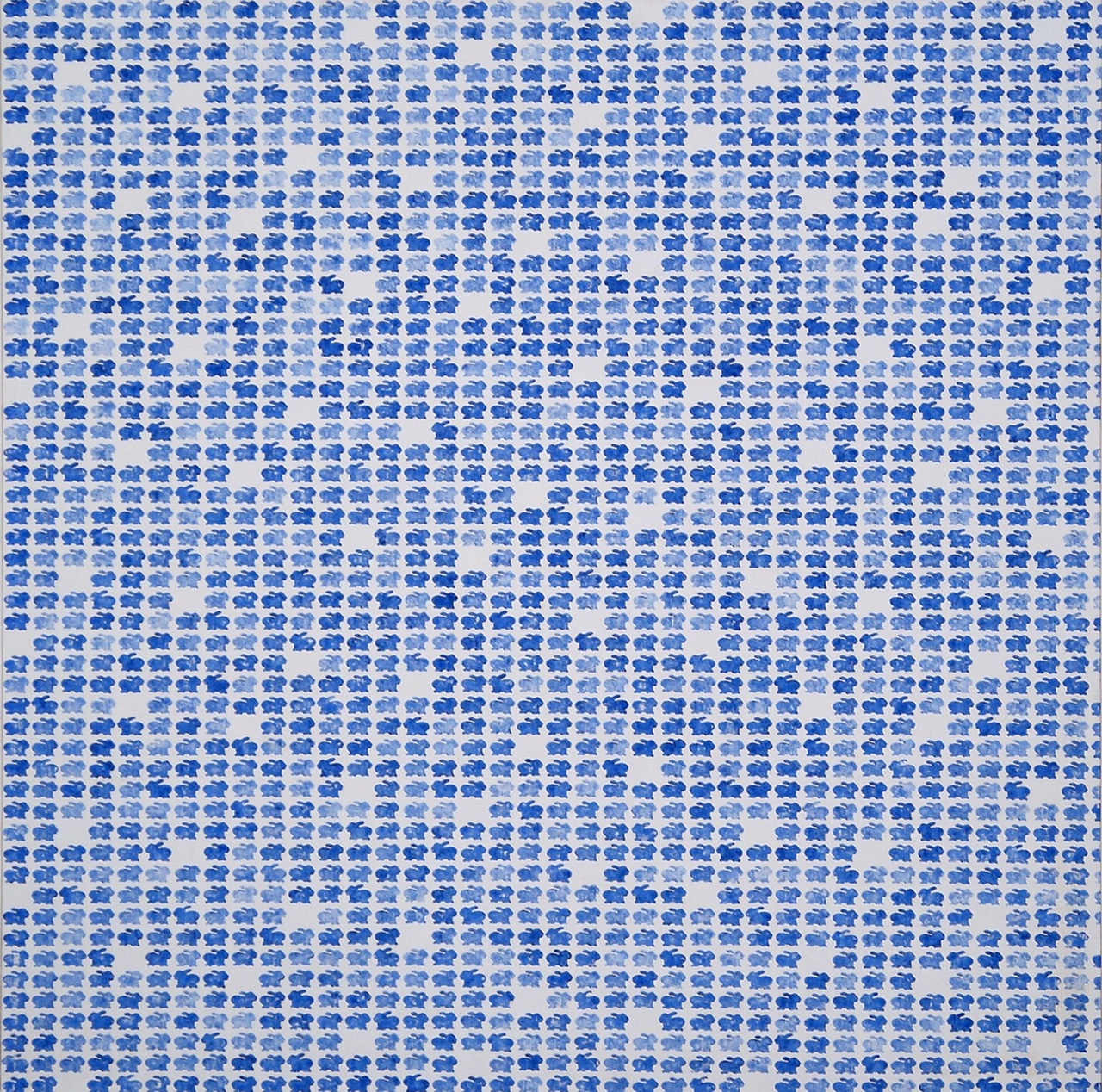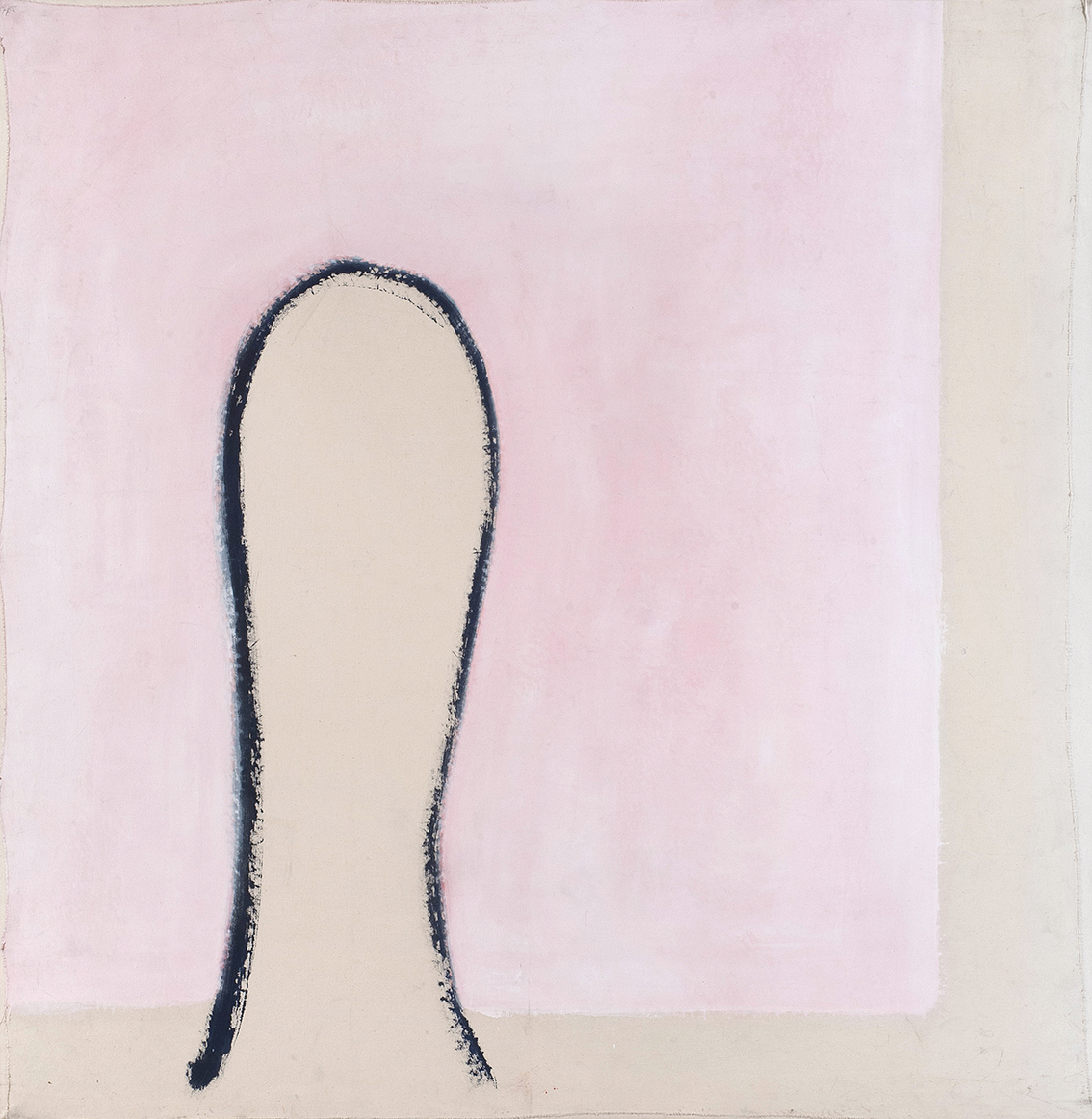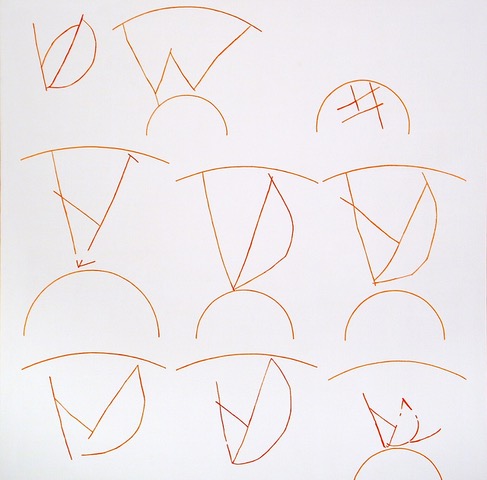Galerie Valérie Bach, Brussels
Zorka Sàglovà / Agnès Thurnauer - Curator Nadine Gandy
solo show

18.03.2018 › 09.06.2018
Sur une proposition de Nadine Gandy
L’exposition « Reconnaissances » est conçue autour de la notion du double. C’est la rencontre de deux artistes contemporaines qui, sans se connaître, ont longtemps mené des vies parallèles ; l’une à Paris, l’autre à Prague. A la fois singuliers et semblables, les parcours artistiques de Zorka Ságlová et Agnès Thurnauer se sont construits dans des contextes différents. Elles ont grandi de part et d’autre d’une Europe divisée, entre elles il y a une différence de génération, mais cela n’empêche en rien leur appartenance à un monde commun.
Ce qui lie les deux femmes est plus fort que ce qui les sépare. Agnès Thurnauer l’a compris d’emblée, en découvrant il y a quelques années le travail de l’artiste tchèque. L’exposition « Reconnaissances », par son titre, évoque précisément cette forme d’identification à l’autre, à travers le geste pictural en l’occurrence. « Reconnaissances » au pluriel, car il s‘agit aussi de célébrer la notoriété tardive de Zorka Ságlová. Contrainte à rester dans l’ombre pendant des décennies, elle est désormais considérée comme une artiste majeure. (...) Christelle Havranek
The exhibition "Recognitions" is conceived around the notion of the double. It is the meeting of two contemporary artists who, without knowing each other, have long led parallel lives: one in Paris, one in Prague. Singular and similar, the artistic paths of Zorka Ságlová and Agnès Thurnauer were built in different contexts. They grew up on opposite sides of a divided Europe, one generation separates them, yet they belong to a common world.
What binds the two women is stronger than what separates them. Agnes Thurnauer understood this from the outset, when she discovered a few years ago the work of the Czech artist. The exhibition’s title "Recognitions" evokes precisely this form of identification with the other, through the pictorial gesture in this case. "Recognition" in the plural, because it is also about celebrating the late notoriety of Zorka Ságlová. Forced to remain in the shadows for decades, she is now considered a major artist.
The trajectory of Zorka Ságlová (1942-2003) occupies a special place on the Czech scene. Raised in the countryside, she joined the workshop of textile design at the School of Decorative Arts in Prague. Her childhood in contact with nature as well as her training will strongly influence her work. Her youthful paintings bear witness to a predilection never denied for natural phenomena, plant motifs and animal shapes. All her life, Zorka Ságlová will try to represent these elements, to record their traces, through a variety of mediums: painting, performance, photography, assemblage. For Zorka Ságlová, human activity and artistic creation are intimately linked. This conviction is at the origin of the installation performance "Seno - sláma" from 1969, which featured haystacks packed in the Vaclav Špála Gallery in Prague. Judged subversively, the exhibition was violently criticized and led to the long-term exclusion of Zorka Ságlová from the artistic scene. For almost 20 years, she was no longer allowed to express herself in public spaces and consequently devoted herself mainly to painting. Her studio thus became her unique and indispensable space of freedom.
The necessity of freedom is also what characterizes Agnes Thurnauer's career. Born in 1962 in Paris, where she lives, Agnes Thurnauer has been painting since she was young. She remembers "[her] first worshop in kindergarten, in a corner of the classroom, where [she] worked every morning". A reserved little girl, she found in painting a means of expressing her thoughts more easily than with words. She calls herself an autodidact and has above all an innate sense of pictorial expression. Despite, or rather because of her passion for painting, Agnès Thurnauer did not wish to study this medium. At 20, she enrolled at the National School of Decorative Arts to train in moving image techniques, looking for new modes of representation that could feed her pictorial work. As Agnes Thurnauer constantly reinvents painting, she associates it with other forms of expression, summoning the body, thought, time. She practices an out-of-frame painting, open to the world. "États des lieux" is how Agnes Thurnauer defines her paintings. She sees them as "geographies and sensitive surfaces" which capture what is at play within the studio.
The studio is essential to Zorka Ságlová and Agnès Thurnauer. Both share a common understanding of space. If both work in seclusion they are aware of the world that surrounds them. To paraphrase Gustave Courbet, "it is the whole world coming to [them] to be painted ". A world that both artists apprehend with their knowledge, particularly in art history, which see them refuse all hierarchies between disciplines, times and cultures. Their studios hold the multiple sources of inspiration - materials, objects, images, writings - which participate in the genesis of the works, and sometimes find themselves physically registered on the canvas. The studio represents for both of them a fundamental moment in the creative act. It is a place of exploration. It is a place of performance.
Bringing together a dozen works, the exhibition creates a dialogue by pairing off the artists ‘pieces. This conversation between the works is materialized by Thurnauer’s installation « Matrix », a set of letter molds scattered on the floor. Neither chronological nor thematic, the proposed course is intuitive. Visitors are invited to wander from one world to another and, throughout the show, to perceive affinities, or draw lines between the juxtaposed works. Rather than resemblances, collusions and complementary features emerge. Here, the gestures respond to one another, with the spontaneous, swirling outline of a preparatory drawing on one side and the unfinished sketch of animal shapes on the other. There, comes the question of rhythms, of musicality itself, with the repetition of a motif that invades the canvas, placed near an aerated pictorial space crossed by strips, punctuated with signs, like a breathing. Further, colors come into resonance thanks to the combination of an area of red ocher with a white canvas from which arise a wing and its multicolored palette.
Most of the paintings in the exhibition are parts of series, some ongoing over a period of many years. We can observe variations around the same theme, recurring patterns, signs, spreading over various supports, in various forms. Agnès Thurnauer and Zorka Ságlová share a taste for experimentation. Doing, undoing, redoing is how they question space and temporality. One paints as one weaves, the other paints as one writes. Deriving from the Latin "texere", the words text and weaving (tissage in French) have the same etymology, another mark of similarity.
Zorka Ságlová and Agnès Thurnauer, united through their works in this exhibition, invite us to experiment dialogue as described by philosopher Maurice Merleau-Ponty: “In the experience of dialogue, there is constituted between the other person and myself a common ground; my thoughts and his are interwoven into a single fabric”.
Christelle Havranek











